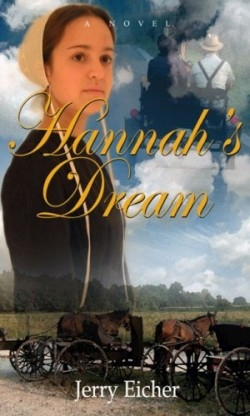Hannah's Dream
Rummspringa, a Pennsylvania Dutch word meaning “running around” is the transitional phase between schooling’s end and voluntary adult church membership, during which Amish young people are temporarily allowed to try on the ways and trappings of American or Canadian cultures, known as the “English,” from music to parties to motor vehicles. The decision must be made freely; experimenters may break from the tradition, but that’s the exception. This period was most publicly illustrated in the 2002 triple-Emmy winning documentary The Devil’s Playground.
Sixteen-year-old Hannah Miller exudes naïveté and absolutely lacks guile. One admirer notes that she has “…all kinds of stars in her eyes.” Hannah dreams of reconciling a poetic, idealistic notion of romantic love with the will of God, as filtered through her parents. Eager for excitement but not predisposed to rebellious rummspringa, she leaves the South Bend area to help her aunt on a Montana horse farm and wrestle with the options.
Bachelor number one: Sam stands to inherit a choice farm, on which he and a future spouse will work intensively every day of their grueling lives. He’s loyal and a punctual letter writer. Downside: Sam hates books and Hannah gets bored just thinking about him. Bachelor number two: A bit of a bad boy, Peter mixes with the “English” and cruises the byways of northern Indiana in an extremely unbuggylike sports car. He tells Hannah to watch for him out her window some night, and to never mind her old-school father or the watchdog. Downside: May tell innocent womenfolk what they want to hear. Bachelor number three: A fire spotter for the Forest Service in northwestern Montana, Jake hikes down from the Cabinet Mountains to sing praise songs in church. Not ready for membership, he carefully avoids sins which require a “knee confession.” Downside: Burned once by love; might be hung up on the past.
The author incorporates approximate symmetry into characters’ experiences to show the impact of acceptance and rejection from both sides. Religion is part of daily discourse, but cultural norms and the processes used to determine their pairings are prominent in this story. The strong paternal tone is best viewed through a prism of relativism; otherwise occasional pronouncements like, “it takes a woman to straighten out what a woman messes up,” could appear as internalized scorn for female competence.
Jerry Eicher’s other young adult novels are the briskly selling Sarah and A Time to Live. Raised in an Amish community, the author is active within the Anabaptist Evangelical movement. Amish readers will note general support for the goals and expectations of established ways, despite a few indirect criticisms. Those of other philosophies may be surprised to learn that the mildest gesture of greeting appears to obligate two people to establish a family together. Hannah’s Dream is aimed at teens but can be enjoyed by curious adults of “English” or any other extraction.
Reviewed by
Todd Mercer
Disclosure: This article is not an endorsement, but a review. The publisher of this book provided free copies of the book and paid a small fee to have their book reviewed by a professional reviewer. Foreword Reviews and Clarion Reviews make no guarantee that the publisher will receive a positive review. Foreword Magazine, Inc. is disclosing this in accordance with the Federal Trade Commission’s 16 CFR, Part 255.

